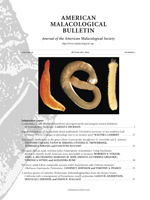Bivalves share many of the “deeper” questions with the other molluscan groups - issues such as their origin and sister-group relationships within the Mollusca, and their suitability to explore molecular data in a “known” fossil framework. Other questions are more specific to bivalves, a group that radiated so successfully and nowadays predominantly specializes as infaunal and sessile epifaunal suspension feeders. This paper highlights and explores unanswered questions, from the seemingly trivial and mundane (e.g., how many species are actually out there?), to exploring enigmatic clades about which we know extremely little besides their shells, to macroevolutionary questions that could best be addressed by bivalve-based data. Fast-developing molecular approaches, including the first genome-level and transcriptomic data, a resurgence of detailed morphological and soft-anatomical research, and a renewed focus on Bivalvia by biological and paleontological workers provide us with an opportunity to address such issues. Coordination of efforts - and reciprocal illumination - across traditional disciplinary boundaries will be key factors in such endeavors.
How to translate text using browser tools
1 January 2013
Bivalvia—A Discussion of Known Unknowns
Rüdiger Bieler,
Paula M. Mikkelsen,
Gonzalo Giribet
ACCESS THE FULL ARTICLE
bivalves
phylogeny
systematics
taxonomy
technique





